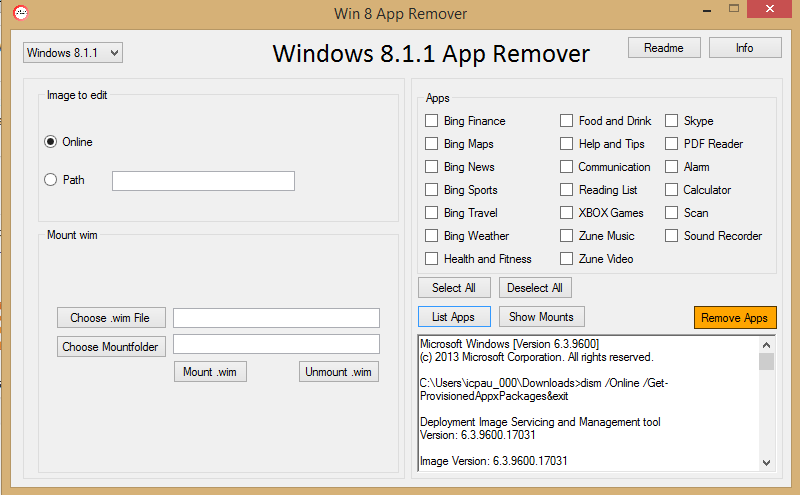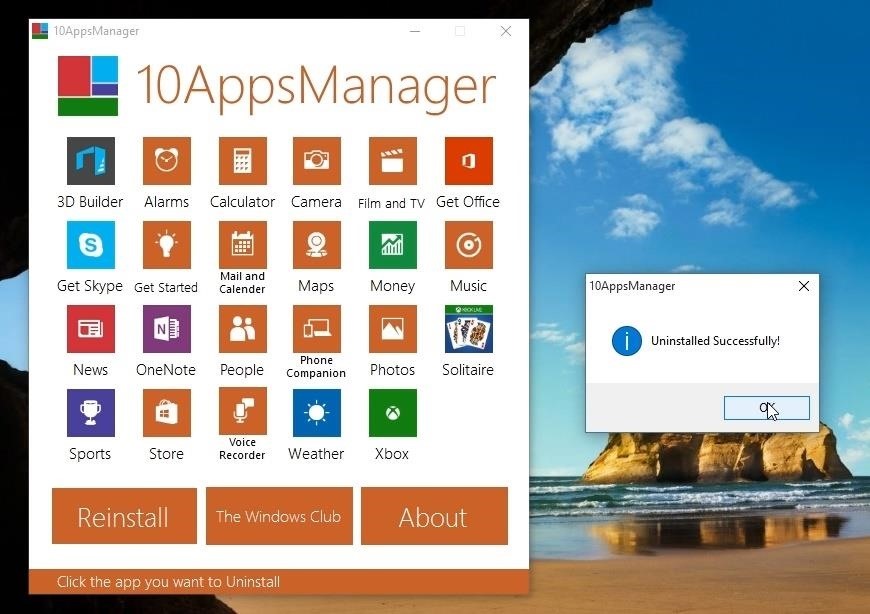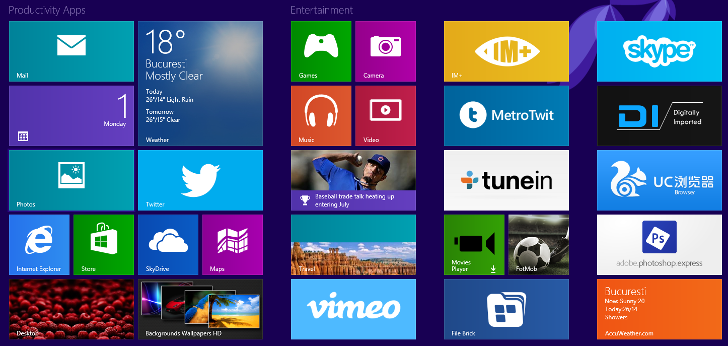Metro Bloatware Remove
We originally published this article about a year ago, but in light of, cleaning crapware off your PC is now more relevant than ever. For Superfish-specific instructions, see our handy guide. But even if you don’t own one of the affected Lenovo PCs, the following guide should still prove helpful. Boot up a new PC for the first time, and you should be able to watch it fly.
Like many other carrier-locked devices, the Samsung Admire comes with a lot of bloatware loaded on by MetroPCS that may not be wanted by many MetroPCS user. Dec 03, 2017 I was finally able to remove every piece of bloatware that I couldn't before no matter. & Discussion How To Delete Bloatware On Metro PCS XT1765.
Instead, it may sputter and struggle to get off the ground, thanks all the preinstalled junk that vendors habitually dump onto new PCs. Bloatware—also known as crapware—is more than annoying, because it actively consumes your computer’s resources. It’s worth your time to clean it off a new PC so you can use it to its full potential. Here’s how to do that with minimal headaches. Bloatware 101: How manufacturers make PCs slower But first, some background.
Manufacturers install bloatware on new PCs because they’re paid to do so. PC profit margins are low, so preinstalling junk gives PC manufacturers a bit of extra money—and, to be fair, keeps your PC cheaper than it would otherwise be. Beyond sucking up your computer’s storage, however, bloatware often loads at startup, increasing how long your PC takes to boot, wasting valuable RAM, and generally cluttering your system tray, desktop, installed applications, and context menus. An example of bloatware that came pre-installed on the author’s PC. Many types of preinstalled software are just plain bad.
Remove Hp Bloatware
You’ll often find antivirus programs that try to scare you paying up by saying your PC is at-risk, advertisement-filled games you don’t want to play, and trial programs that give you an hour free before becoming useless. Not every program included on a new PC is useless, though. Tools worth keeping are the ones that help with your hardware, like the Nvidia Control Panel and GeForce Experience for tweaking your Nvidia graphics hardware settings.
Store app bloatware Windows bloatware has traditionally been confined to the desktop, often loading at startup and filling the system tray. On Windows 8 and 8.1 devices, bloatware sometimes comes in the form of preinstalled —the new full screen apps that appear in the Modern-style Start screen’s tiled interface. Bloatware that comes in the form of Metro apps is still unwanted, but it’s nowhere near as burdensome as bloatware on the desktop. Even if you don’t like Windows 8’s new touch-first interface, this type of bloatware is much better. Such apps can’t start automatically at boot, so they won’t run in the background and slow down your system.
Plus, they’re a cinch to uninstall—just right-click or long-press those tiles and select Uninstall. Refresh and Reset have been compromised When Windows 8 was released, many people found that they could obliterate bloatware from new PCs with the. These restore Windows back to a clean state—they’re basically an easy way to reinstall Windows. Windows 8’s Refresh and Reset options aren’t the bloatware-banishing blessing that they appear to be at first glance.
Unfortunately, Refresh and Reset probably won’t remove bloatware on new PCs. System manufacturers have realized that they can create custom recovery images full of bloatware, so refreshing your PC will simply restore all the same junk. Microsoft doesn’t prevent computer manufacturers from adding bloatware to their recovery images. You can create your own, too.
When you get a new PC, first remove the bloatware and then create a custom refresh image. When you Refresh or Reset your PC, you’ll restore it to that clean state without any bloatware.
Get help removing bloatware PC Decrapifier in action. Several handy utilities can help you combat bloatware. Is designed to make crapware eradication as easy as possible. Run this program and it will attempt to installed on your PC.
It’s far faster than hunting through your Control Panel, uninstalling programs one by one. Easy bloatware removal is the utility’s stock in trade. It displays the programs installed on your computer, informs you what they do, and shows you whether other users have chosen to remove it. This program’s website even. Uninstall the junk You can also remove bloatware like you’d remove any other type of software. Open your Control Panel, view the list of installed programs, and uninstall any programs you don’t want. If you do this immediately after getting a new PC, the list of programs here will only include the stuff that came with your computer.
You can also check your system tray to see what’s running in the background, which can help you find some of the worst, most annoying offenders. Uninstall anything you don’t use to prevent it from coming back the next time you boot your computer. The Add/Remove Programs tool on a PC chock full o’ crapware. When in doubt, perform a Google search for the program. You may be able to find bloatware removal guides for your specific model of laptop or desktop PC.
An enterprising user may have written up a guide explaining what all that preinstalled software actually does, which programs are necessary, and which you’ll want to remove. Reinstall Windows to get a clean system You could also take more drastic methods. Many geeks insist on performing a clean Windows install on all their new PCs. Rather than trying to clean up the bloatware, they find it easier to obliterate everything and start from scratch.
This works well, but it can be time-consuming and a bit tedious. All you need is a fresh Windows disc. (If your new PC doesn’t have a DVD drive, you can on a USB drive.) Insert the installation media into your computer and reboot. Install Windows normally and you’ll end up with a clean Windows system as Microsoft intended it, without any of that manufacturer-specific clutter. Burning your new PC’s operating system to the ground and building it back up with a fresh Windows install works, too. Manufacturers generally don’t include Windows installation media with new PCs anymore.
When they do, it’s often packing the same bloatware, so you’ll have to find fresh media yourself. Microsoft offers a way to, while Digital River lets you —Digital River is a licensed distributor of Microsoft software, so this is legitimate. ( UPDATE 2/25/15 Digital River no longer works; you can now download Windows 7 ISOs from.) ProduKey can find your system’s product keys for you, for free. When you reinstall Windows, you can use the same Windows product key that came with your laptop or desktop PC. You’ll often find it printed on a on the PC itself. If you can’t find it, run a program like to find the product key associated with your installed copy of Windows, and write it down ahead of time. Many new Windows PCs come with their product key embedded in their and should automatically enter the key when you install Windows 8, so you won’t always have to do this by hand.
There are downsides to this route. You’ll have to spend some time reinstalling Windows whenever you get a new PC rather than using it immediately. Any files and programs currently installed on your PC will be erased, so this method should be used immediately after you get a new PC, not for cleaning up leftover bloatware weeks later.
You’ll also have to install any useful hardware drivers or utilities afterward. Windows will automatically fetch many hardware drivers and install them, but it won’t necessarily install everything. You’ll want to visit your hardware manufacturer’s website, locate the page for your specific model of computer, and download the appropriate drivers for it. (Here’s a guide to if you run into trouble.) Burn it down to build it up No matter which method you use to combat bloatware, the fun part begins when you’re done scraping out all the crap: Loading your PC back up with genuinely useful software. We can recommend a number of that everyone should have.
Contents. How to Remove Bloatware. How to Remove Bloatware The simplest method to ensure bloatware doesn't bother you is to find out if there is an option to order the system without any bloatware.
Smaller manufacturers, particularly ones that build systems to order, will let you dictate what you want on your new PC. Want a copy of Steam preinstalled and set up with your account information? Smaller manufacturers (sometimes called boutique vendors or boutique system builders) will do that for you. If you're stuck buying a system from a big box store, then you're likely to be saddled with bloatware. The next best way to ensure that you don't have bloatware is to wipe your PC's boot drive and install a fresh copy of the operating system from a store-bought copy of Windows (aka, a clean install of Windows).
If you just use the system's recovery utility, you'll get the originally preinstalled programs back as well. A clean install will erase all existing data and other preinstalled programs, even the ones you find useful, but it may be the only way to completely eliminate any offending bloatware from your system. Another way is to remove the bloatware manually. This may ultimately be the most convenient way to do it, since a clean install and downloading all the Microsoft/hardware updates may take hours or even days. Don't be afraid to uninstall programs, most trialware can be reinstalled by downloading the installer from a website, and you can always bookmark websites. To remove most bloatware, go into the Programs control panel (StartControl PanelPrograms and Features), select the offending software, and click uninstall. The program will either ask you to confirm the uninstall process, or just go ahead and uninstall itself.
This may or may not leave other dependent programs or shared files on the hard drive. For example, removing some utilities may not uninstall every single preference or system file associated with the product, or possibly leave an empty folder in your start menu. For particularly entrenched programs, like antivirus and firewall programs, we recommend that you seek out the 'complete uninstall' procedure on the developer's website.

For example, Symantec has a handy Norton Removal Tool on its Website to remove its products, and McAfee has a similar download on its site. Repeat as needed for other programs.

This process may take a few minutes or a few hours, depending on how much bloatware is on your system. Bloatware that are essentially shortcuts to a website (double-click on the icon and it opens up an advertisement in Internet Explorer) don't need to be uninstalled. You'll usually find these shortcuts as menu items in the Start menu or as icons on the desktop. They deleted by dragging them to the recycle bin.
Some examples of Bloatware found on a recently reviewed system. Blio This ebook reader program is also the front end to an online bookstore. Blio is notable as a creation of tech superstar Ray Kurzweil. That said, you won't need Blio if you already use B&N Nook, Amazon Kindle, or Apple iTunes for books.
Microsoft Office 2010 Starter Edition The free Office 2010 Starter Edition is included with many new PCs. Unlike the old trial version, this one doesn't expire. But it lacks advanced upgrades like Outlook, PowerPoint, macros in Excel, and version control in Word. It will still let you open, print, edit, and save Word and Excel documents, so it's not crippled. You can upgrade to a professional version of Office online with a credit card.
This is a keeper whether you upgrade or not. Games (a.k.a., HP Games, Acer Games, or Gateway Games) Administered by WildTangent, this is essentially an online game store. Many of the games are casual ones like Bejeweled and Diner Dash. The system reviewed had many games preinstalled. Keep it if you wish, but it's really a storefront for pay services. Kobo Another competing ebook reader with built in store.
Keep it if you have a Kobo device (or are in Canada where Kobo is popular). Otherwise you can uninstall this. Zinio An online magazine service. (Disclosure: Zino distributes PCMag Digital Edition). Zinio is the online/print magazine industry's elder statesman, so you may find your favorite magazines on this service. You can delete this if you prefer paper or already get your magazines on your iPad. Press Reader Another ereader, this time made for newsprint from '2000+ newspapers.'

Non-subscribers can delete. Snapfish HP's online photo printing service. Another advertisement in app's clothing.
What Bloatware Can I Remove
Norton Internet Security This usually comes in the form of a 60-day trial, which is really short. Some configurations include 12-15 months, which is usable.
For short 30-90-day trial subscriptions, you really have to like Norton to pay extra for the full subscription. Consider uninstalling and finding a respected free antivirus program. Sprint Mobile Broadband An ad for a mobile service on a desktop.
Why is this here? Get rid of it.
Skype Useful to current Skype users, superfluous to everyone else.—.